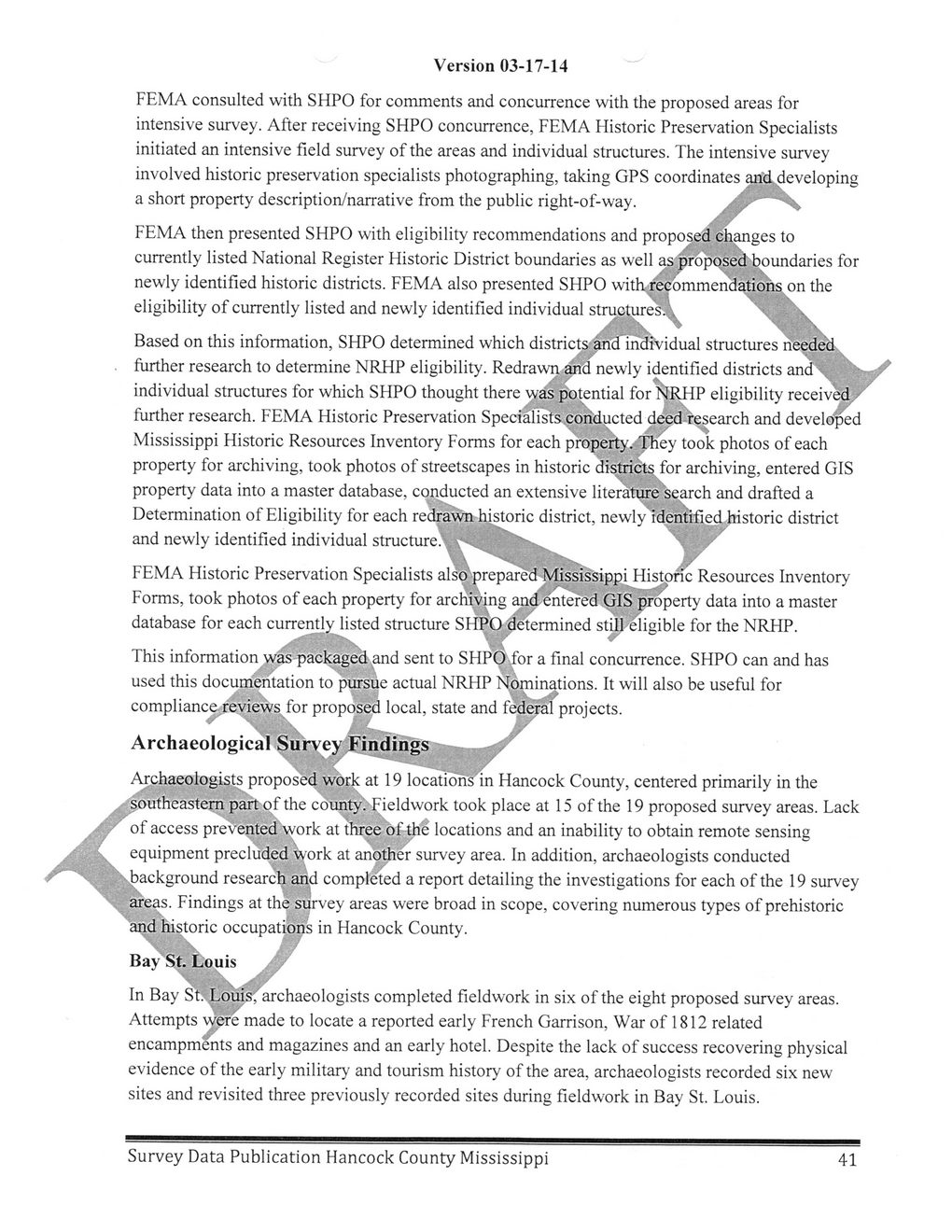This text was obtained via automated optical character recognition.
It has not been edited and may therefore contain several errors.
Version 03-17-14 FEMA consulted with SHPO for comments and concurrence with the proposed areas for intensive survey. After receiving SHPO concurrence, FEMA Historic Preservation Specialists initiated an intensive field survey of the areas and individual structures. The intensive survey involved historic preservation specialists photographing, taking GPS coordinates ancLdeveloping a short property description/narrative from the public right-of-way. / y' FEMA then presented SHPO with eligibility recommendations and proposed changes to currently listed National Register Historic District boundaries as well as proposed boundaries for newly identified historic districts. FEMA also presented SHPO with recommendations on the X S N \ eligibility of currently listed and newly identified individual structures. \ \ \ Based on this information, SHPO determined which districts-arid individual structures needed further research to determine NRHP eligibility. Redrawn and newly identified districts and \ individual structures for which SHPO thought there was potential for NRHP eligibility received/' further research. FEMA Historic Preservation Specialists.coriducted deed research and developed Mississippi Historic Resources Inventory Forms for each property. They took photos of each property for archiving, took photos of streetscapes in historic districts for archiving, entered GIS property data into a master database, conducted an extensive literaturesearch and drafted a Determination of Eligibility for each redrawn historic district, newly identified historic district and newly identified individual structure. FEMA Historic Preservation Specialists alsO'prepared Mississippi Historic Resources Inventory Forms, took photos of each property for archiving and entered GIS property data into a master database for each currently listed structure SHPO determined still eligible for the NRHP. This information was packaged and sent to SHPO for a final concurrence. SHPO can and has used this documentation to pursue actual NRHP Nominations. It will also be useful for compliance reviews for proposed local, state and federal projects. •y" v Archaeological Survey Findings v xv' / Archaeologists proposed work at 19 locationsin Hancock County, centered primarily in the southeastern part of the county. Fieldwork took place at 15 of the 19 proposed survey areas. Lack of access prevented work at three of thf locations and an inability to obtain remote sensing equipment precluded work at another survey area. In addition, archaeologists conducted • background research and completed a report detailing the investigations for each of the 19 survey areas. Findings at the survey areas were broad in scope, covering numerous types of prehistoric and historic occupations in Hancock County. Bay St. Louis In Bay St: Louis;'archaeologists completed fieldwork in six of the eight proposed survey areas. Attempts were made to locate a reported early French Garrison, War of 1812 related encampments and magazines and an early hotel. Despite the lack of success recovering physical evidence of the early military and tourism history of the area, archaeologists recorded six new sites and revisited three previously recorded sites during fieldwork in Bay St. Louis. Survey Data Publication Hancock County Mississippi 41

Hancock County History and Archeology Survey-Publication-Data-2014-(44)